 So you are ready to start thinking about a website?
So you are ready to start thinking about a website?
What should be the first thing you should communicate with your users – NAVIGATION.
Think about it, you want your users to be able to find what they came to your site in the first place. You do that with a well thought-out, intuitive navigation.
First you consider your audience or who your audience might be. For eCommerce websites that means you want your navigation to be product focused. This means you want to categorize what you are offering in clear/concise manner. You can do this very easily by creating a category structure that allows your users to navigate through your site with little or no thought.
So you’re selling shirts. Are you selling male and female, boys and girls products? Then your navigation should reflect that. Organize your inventory by breaking it down or departmentalizing it. This will prove effective with search engines as well.
Say Sally is looking for shirts for her daughter theorectically she will find your site because your categories are labeled rich in search engine keywords that adequately define the product they are searching for, i.e. girls, shirts, short sleeve etc. But don’t stop there, make categories that allow you to shop by size, by brand, even by price.
Rollover menu/Dropdown menus
You want to display your content pages or products or categories and don’t know how to organize them so that they’re easy to find, navigate – rollover menus are a great way to display these pages without weighting down your look and feel. The menu items in a rollover menu on first glance look hidden but don’t be fooled, the search engines can read every link in your menu. So all the keywords you have embedded in your product categories, page names will get served up faster since they will be placed in a rollover menu at the top of your code.
Search engines read websites read through your website code top to bottom. It is imperative you have the most important navigable items at the beginning of the code which you will be presenting via the top navigation area in the header of your website.
The Search Box
There are those that may utilize your well thought out navigation or skip it altogether. This means you also must provide an easy to use and see search box. Place it above the browser fold in your header or atop your left or right column of the content area.
For an eCommerce store or even a content driven website, information will only be found successfully if your meta keywords are embedded well for the search box to deliver to its users.
The footer is important too!
The footer can often be overlooked because it is at the bottom of the website. Don’t be fooled, the footer can be very helpful. Say you happened upon the bottom of a long list of products or informational page. You can save your users time from navigating back to the top of the site by creating a footer that reiterates the header and other useful information. It is a great practice to serve up your parent categories in the footer along with company links like policies, about us, contact etc.
Focus groups have found when challenged to use a website if they do not find what they are looking for in seconds they will leave the site almost instantly. This is a harsh reality so make sure you keep that in mind when creating your website.
Good Luck!
